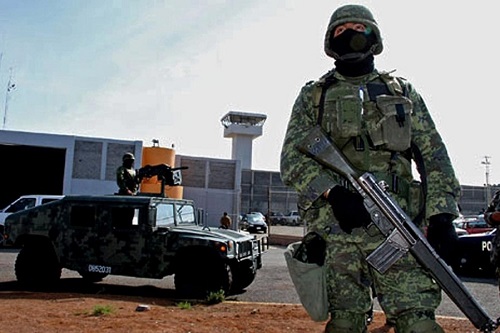AFP photo
By
Ricardo Swire
Revised regional internal security data reflects how CARICOM states’ national defence and law enforcement counter-drug operations have been most successful when intelligence reports are assimilated. Transient members of transnational drug trafficking cartels cherish CARICOM member state Belize, because it shares contagious borders with Guatemala and Mexico. Belize’s large areas of unpopulated jungles and forest such as Petén, its long un-policed coastline punctuated by the Key or four hundred and fifty small islands, plus a network of inland waterways, enhance Belize’s drug trafficking warehousing appeal.
A lack of adequate law enforcement resources resulted in mushroomed drug/firearms trafficking related murder rates and gang related violence. Police counter-narcotics operations impounded numerous abandoned boats and planes near secret landing tarmacs or crashed in Belize’s territorial waters. Caribbean intelligence officials registered the growing number of complaints from Belizean maritime law enforcers, who have encountered heavily armed Mexican and Colombian gunmen, assigned to protect cocaine shipments traversing Belize’s densely vegetated mangroves.
One report described how a Lebanese gun-trafficking national carrying a fake Belizean passport, linked to an Arab extremist organization, was intercepted in Cancun by Mexican Federal Police. Evidence suggests Mexican drug cartels have linked with Central American Maras. Together the criminal organizations have infiltrated Belize’s governing bodies and function as phantom co-governments in some local districts. A penetration method mastered by Mexican drug cartel Los Zetas in the northern state of Coahuila south of Texas USA.
The Mexican criminal element’s co-government method started with achieving a prison compound’s “self-governance.” Los Zetas members penetrated and took over the Piedras Negras Prison’s management in Coahuila Mexico. Los Zetas overwhelmingly influenced the Piedras Negras Prison Chief to practice a co-government that replicates Los Zetas’ model. The prison functioned as a self-contained criminal ecosystem. From 2011 to 2013 Los Zetas utilized a network of Mexican prison ovens to hide systematic mass extermination of rivals.
The Zetas appointed Piedras Negras prison boss oversaw one hundred inmates who operated as his lieutenants, bodyguards and traffickers. This special group made millions of pesos annually from jail-based commerce. Some of the booty paid prison officials to ensure freedom of action. The Zetas’ Piedras Negras jailhouse core function was operating a garage within prison walls. The workshop installed secret compartments in cars that transported cocaine across the border. Piedras Negras borders Eagle Pass in Texas. One Zetas Boss aka “Z-42” used the Piedras Negras jail as his “safe house,” when warned about intended law enforcement raids on his city bases.
Patterns show the Zetas’ basic goal of co-government, whether inside or outside a prison, is to protect and maximize financial rewards. Los Zetas’ methods of governing the Piedras Negras jail included safe harbor for cartel under-bosses and installation of hidden compartments in minivans used by cocaine mules. In the Mexican drug trafficking equation Belize is a vulnerable CARICOM member state. Forty-three times smaller than neighbor Guatemala and fifteen times less than other Central American countries.
The co-government style has been exported and is driven by intimate relationships between Mexican cartels and local Maras. Such union capitalize on Belize’s strategic importance in a lucrative regional weapons and drugs smuggling trade. A continuous political Guatemala/Belize territorial dispute muddies cross-border intelligence sharing. The diplomatic confrontation also puts a wedge in joint operations that enhance public safety and combat organized crime in the CARICOM member state.
Ricardo Swire
Ricardo Swire is the Principal Consultant at R-L-H Security Consultants & Business Support Services and writes on a number of important issues.



No Comments Yet!
You can be first to comment this post!